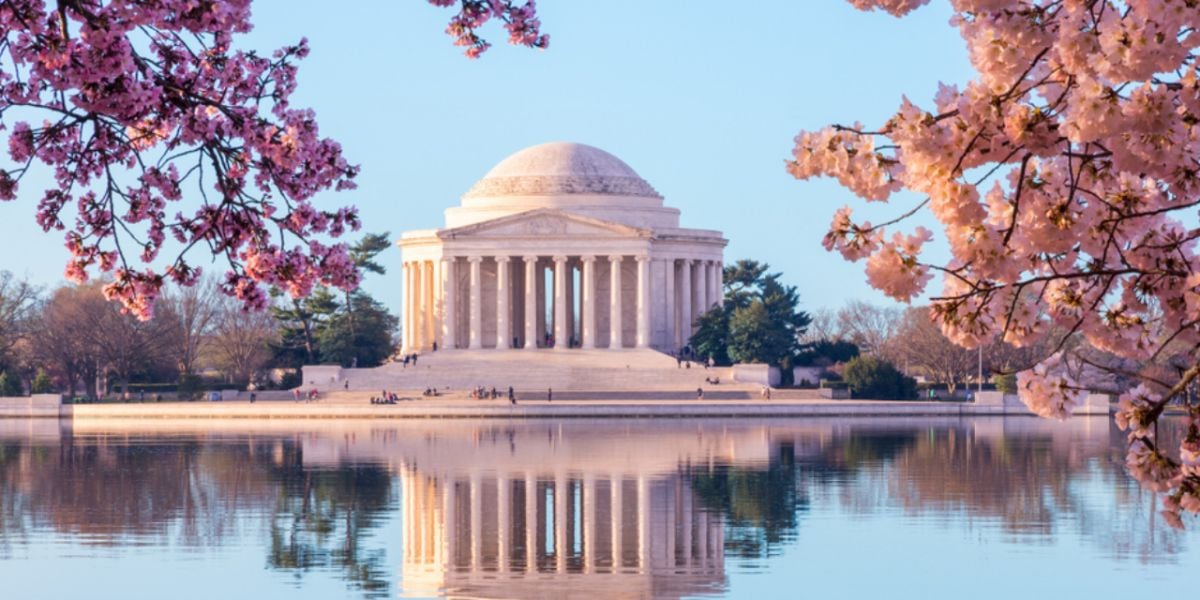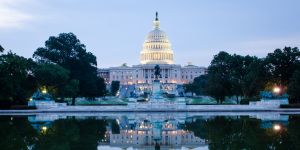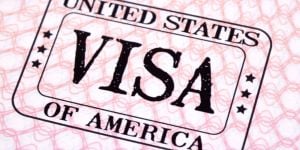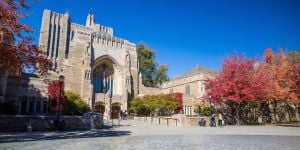
Washington is the capital of the United States and the seat of the federal government. One of the country's largest cities, DC is also on the list of the top ten most expensive cities in the US, partly due to high housing costs and the dense concentration of high-income earners. The number of government jobs means that it is a very cosmopolitan city and has a population that hails from all over the world. Life in Washington, DC, is fast-paced and pricey, and if you want to work in government or tech, you will be rubbing shoulders with ambitious, highly educated people. However, the city is not just about politics – it's a diverse place with a huge range of neighborhoods and cultures, as well as parks, impressive monuments, and excellent schools. This article gives you an overview of the local property market, the best places to settle in, and what to expect.
Where to live: Neighborhoods in Washington, DC
With its diverse population groups, lively social scene, and burgeoning new neighborhoods, the nation's capital offers an inviting environment for expatriates. The key to making the most of your experience lies in selecting the perfect neighborhood to call home.
If you're a young professional pursuing an exciting place to live, neighborhoods like Adams Morgan, DuPont Circle, and Cleveland Park might pique your interest. For those seeking a quieter, suburb-like atmosphere, areas such as Silver Spring, Bethesda, and Arlington provide a peaceful haven. Regardless of your lifestyle preferences and desired amenities, Washington, DC, has an array of neighborhoods, each with its own distinct character.
Though you may hear that some neighborhoods in DC have poor reputations, it's important to remember that DC has done a lot to deal with its reputation as a dangerous city; violent crime has decreased by 25%. However, property crime remains a challenge in some areas, with vehicle theft and burglaries on the rise. DC's crime rate still sits above the national average, so it's important to consult up-to-date crime maps when choosing a neighborhood.
Regardless of your chosen neighborhood, navigating DC is a breeze. A robust transportation network, with most commuters relying on foot, bikes, or public transit, ensures smooth transits. With its broad sidewalks and numerous attractions, the city is a pedestrian's delight. The Metrobus, DC Circulator, and Metrorail systems knit the city together, while Fairfax connector buses and VRE/MARC trains link neighboring states. Embrace the capital's rich diversity, exploring its neighborhoods and crafting your unique experience.
Capitol Hill
At the heart of the city, Capitol Hill stands as a political epicenter and one of the most exclusive neighborhoods. Excellent public transportation, historical landmarks, shopping, dining, and parks characterize this area. The average rent here is around USD 2,950 per month.
Adams Morgan
A compact neighborhood, Adams Morgan thrives among younger crowds and has been popular with young professionals. The architecture includes gorgeous 19th-century buildings, although its housing options cater to various preferences. In Adams Morgan, average rent is around USD 2,500 per month.
Arlington
An eminently walkable neighborhood, Arlington boasts picturesque pedestrian routes and great bike-friendliness. Proximity to downtown DC renders it convenient for daily commutes.
DuPont Circle
Characterized by upscale living and luxurious high-rises, DuPont Circle exudes elegance. This vibrant neighborhood offers chic shops, fine dining, and a vibrant nightlife. The area is also a hub for international embassies and missions. Not one for those living on a budget.
Foggy Bottom
Contrary to its misty moniker, Foggy Bottom is a vibrant urban neighborhood. Home to cultural landmarks like the Kennedy Center, it has a strong cultural presence. The neighborhood's star attractions include Rock Creek Park and stunning views of the Potomac River.
Chevy Chase
A small town nestled within a bustling city (and technically in Maryland rather than DC), Chevy Chase is celebrated for its relaxed, small-town ambiance. This family-friendly neighborhood is adorned with playgrounds and green spaces, offering a retreat for those wanting to escape the hectic rush of the capital.
Columbia Heights
A haven for local artists and home to a significant Latino population, Columbia Heights exudes cultural vibrancy. The neighborhood hosts the GALA Hispanic Theatre and the Mexican Cultural Institute's programs and events. The average rent here is currently USD 2,500
Penn Quarter and Chinatown
These two bustling neighborhoods form the city's entertainment nucleus. Hosting Capital One Arena, the Smithsonian's American Art Museum, the National Portrait Gallery, and the FBI headquarters, they draw crowds seeking excitement. Chinatown, once a Chinese expat hub, now houses a smaller Chinese population.
Palisades
Running along the Potomac River, Palisades offers upscale homes along with moderately priced apartments and townhouses. Its weekly farmers' market and culinary delights are another wholesome point in its favor.
Fairfax
While technically a separate city, Fairfax is often considered an outlying DC neighborhood. Famed for its excellent schools, it remains a sought-after spot for those raising families.
Rent prices and charges in Washington, DC
Like many big cities, the size of apartments diminishes and costs rise the closer you are to the center, and Washington, DC, is no exception. In the DC metropolitan area, most people live in fairly compact apartments and pay steep rents.
Currently, the average rent for a DC apartment is USD 2,335. Prices vary greatly depending on the neighborhood and the type of housing you choose.
- Studio: USD 1,952,
- One-bedroom: USD 2,417,
- Two-bedroom: USD 3,360.
On average, an apartment in the city is about 745 square feet. Studios are the smallest and most affordable. One-bedroom apartments are similar in size and cost to the city average. If you want more space, two- and three-bedroom apartments are available, but they come at a higher cost.
Generally, leases in Washington, DC include charges such as water, gas, trash service, and building maintenance. Most accommodations will have a heating system and air conditioning and include major appliances such as a refrigerator and stove/oven.
Good to know:
Many rentals do not come with designated parking.
DC utility costs average USD 420 per month, including USD 229 for energy and USD 191 for phone/internet – all about 10% above the national average. Overall, Washington, DC's cost of living is approximately 50% higher than the national average.
Renting accommodation in Washington, DC
Here are a few other things to look into before signing a lease in Washington:
- Do a walk-through. It may seem quicker and more convenient to rent a place remotely and have it waiting for you when you arrive; it is generally not advised to do so. If you rent an apartment for the long term, it is always best to do a walk-through first and see what condition it is in for you. If, for some reason, this is not something that you can do, you can ask a friend, colleague, relative, or another person you trust to check the apartment for you.
- Check the guest policy. Make sure to check with your landlord about whether you can have long-term guests in case you want to invite your partner, a friend, a family member, etc., to live with you. It is also best to get these rules in writing.
- Review the guarantor clause. This clause refers to student housing — every student renting an apartment needs to have a guarantor. In case a student/students can't make their monthly rent, this burden falls on the guarantor. This is why it is an important clause to check for parents, as they may end up being liable for rent payments.
- Get all the details in writing. If the apartment lease comes with a set list of rules and regulations for you to follow (pet policy, visitor rules, etc.), it's best to get all of this in writing in case of future disputes.
- Run a background check. To avoid future issues, check if your landlord is licensed to rent property in Washington, DC. You can do it via DC's Department of Consumer and Regulatory Affairs - SCOUT database.
- Get a professional opinion. If you have more questions about your lease or are unsure about specific clauses, it's a good idea to consult a lawyer. A lawyer can check your lease and make sure everything is done correctly, and your rights are protected in case of a dispute.
Living in Washington, DC
Living in Washington, DC means having access to a rich mix of culture, history, politics, and events. The city's diversity is reflected in its global cuisine and vibrant neighborhoods, while iconic landmarks like the White House, Lincoln Memorial, and Smithsonian museums offer endless opportunities for exploration, many of them free.
DC's central East Coast location also makes it ideal for weekend travel, with places like Virginia Beach, Shenandoah National Park, and New York City within reach (only a four-hour train ride!). The climate is relatively mild year-round, though summers can be hot and humid, and winters bring some snow.
Useful links:
We do our best to provide accurate and up to date information. However, if you have noticed any inaccuracies in this article, please let us know in the comments section below.








